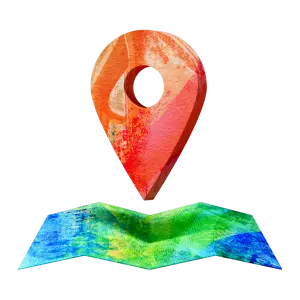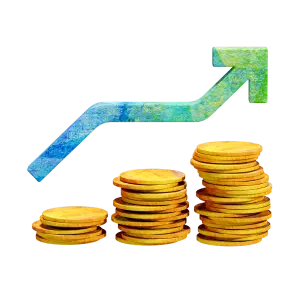Thaise baht (THB)
De Thaise baht is de munteenheid van Thailand. De valutacode is THB, en het wordt ook aangeduid met het symbool ฿. De baht is de 10de meest gebruikte valuta in de wereld, en is één van de sterkste valuta in zuid-oost Azië. De Thaise baht wordt het meest gewisseld met de euro. De omrekenfactor van de Thaise baht gaat tot 6 significante cijfers, en het is een fiduciaire valuta.
Muntsoort
Thaise baht
Valutasymbool
฿
THB wisselkoers
Pas op voor slechte wisselkoersen.Banken en traditionele aanbieders maken vaak extra kosten, die ze dan weer doorberekenen aan jouw in de vorm van een commissie in de wisselkoers. Onze slimme technologie maakt ons efficienter - wat betekend dat jij een geweldige wisselkoers krijgt. Elke keer weer.
| Naam | Thaise baht (THB) |
|---|---|
| Symbool | ฿ |
| Kleine eenheid | Satang |
| Symbool kleine eenheid | สตางค์ |
| Veelgebruikte biljetten | ฿20, ฿50, ฿100, ฿500, ฿1000 |
| Veelgebruikte munten | ฿1, ฿2, ฿5, ฿10 |
| Centrale Bank | Bank van Thailand |
| Gebruikers | Thailand, Laos, Cambodja, Myanmar |
Feitentabel voor Thaise baht (THB)
De evolutie van de valuta in Thailand gaat terug tot het Rattankosin tijdperk, waarin de officiële uitgifte van gestandaardiseerde, in de fabriek gemaakte munten en bankbiljetten begon. Papiergeld debuteerde in 1853 met koninklijke promesses, gevolgd door bankbiljetten van buitenlandse banken. In 1857 kreeg Thailand zijn eerste muntmachine, waarmee het slaan van Thaise zilveren munten begon. Het stroomlijnen van de muntslag vond plaats in 1897, waarbij de 11 denominaties werden samengevoegd tot twee, satang en baht, onder een gedecimaliseerd zilverstandaardsysteem.
Thaise baht en internationale valuta's
De Thaise baht was aanvankelijk gekoppeld aan het Britse pond tegen een vaste koers van 8 THB voor 1 GBP tot 1880. Daarna onderging deze koers verschillende aanpassingen, waarbij de baht tijdens de Tweede Wereldoorlog werd gekoppeld aan de Japanse yen. Na de oorlog werd de koers gekoppeld aan 20,8 baht per 1 Amerikaanse dollar, in 1978 werd dit 20 baht per Amerikaanse dollar en in 1984 25 baht.
In 1997 werd Thailand getroffen door een financiële crisis, waardoor de baht met 50% devalueerde en een zwevend wisselkoerssysteem moest worden ingevoerd. Na deze economische ineenstorting stabiliseerde de Thaise baht zich uiteindelijk.

Moderne geschiedenis van de Thaise baht
Hoewel het officiële gebruik beperkt is tot Thailand, wordt de Thaise baht informeel gebruikt in Laos, Cambodja en Myanmar.
Op 19 december 2006 voerde de Bank van Thailand wisselkoerscontroles in die leidden tot aanzienlijke verschillen tussen de offshore en onshore wisselkoersen, wat resulteerde in spreads tot 10% tussen deze markten. Deze controles werden echter grotendeels opgeheven op 3 maart 2008, waardoor de grote verschillen tussen de offshore en onshore wisselkoersen verdwenen.